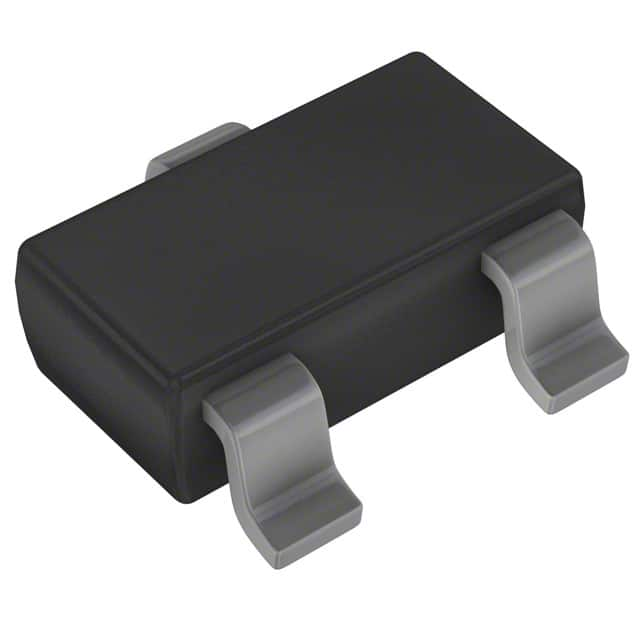Xem thông số kỹ thuật để biết chi tiết sản phẩm.

BC847BT116
Product Overview
Category: Transistor
Use: Amplification and switching
Characteristics: Small signal NPN transistor, high current gain, low voltage
Package: SOT-416 (SC-75)
Essence: Miniature surface mount transistor
Packaging/Quantity: Tape and reel, 3000 pieces per reel
Specifications
- Collector-Base Voltage (VCBO): 50V
- Collector-Emitter Voltage (VCEO): 45V
- Emitter-Base Voltage (VEBO): 6V
- Collector Current (IC): 100mA
- Power Dissipation (Ptot): 200mW
- Transition Frequency (fT): 250MHz
- Operating Temperature Range: -55°C to +150°C
Detailed Pin Configuration
- Emitter (E)
- Base (B)
- Collector (C)
Functional Features
- High current gain
- Low noise
- Fast switching speed
- Miniature size for space-constrained applications
Advantages and Disadvantages
Advantages: - Small package size - High current gain - Low voltage operation
Disadvantages: - Limited power dissipation - Relatively low collector current rating
Working Principles
The BC847BT116 is a small signal NPN transistor used for amplification and switching of electronic signals. It operates by controlling the flow of current between the collector and emitter terminals based on the current applied to the base terminal.
Detailed Application Field Plans
The BC847BT116 is commonly used in audio amplifiers, signal processing circuits, and low-power switching applications. Its small size and high current gain make it suitable for portable electronic devices and compact circuit designs.
Detailed and Complete Alternative Models
- BC846BT116
- BC848BT116
- 2N3904
- 2N4401
This comprehensive entry provides detailed information about the BC847BT116 transistor, including its product overview, specifications, pin configuration, functional features, advantages and disadvantages, working principles, application field plans, and alternative models.
Liệt kê 10 câu hỏi và câu trả lời thường gặp liên quan đến ứng dụng BC847BT116 trong giải pháp kỹ thuật
What is the BC847BT116 transistor used for?
- The BC847BT116 is a general-purpose NPN bipolar junction transistor commonly used in amplification and switching applications.
What are the key specifications of the BC847BT116 transistor?
- The BC847BT116 has a maximum collector current of 100mA, a maximum collector-base voltage of 50V, and a maximum power dissipation of 250mW.
Can the BC847BT116 be used for audio amplification?
- Yes, the BC847BT116 can be used for small-signal audio amplification due to its low noise and high gain characteristics.
Is the BC847BT116 suitable for switching applications?
- Yes, the BC847BT116 is commonly used in low-power switching applications due to its fast switching speed and low saturation voltage.
What are the typical operating conditions for the BC847BT116?
- The BC847BT116 is typically operated at a collector current of 10-100mA, a collector-emitter voltage of 45V, and a base current of 5mA.
Can the BC847BT116 be used in high-frequency applications?
- While the BC847BT116 has moderate frequency capabilities, it may not be suitable for very high-frequency applications due to its transition frequency of around 100MHz.
Does the BC847BT116 require any specific biasing configuration?
- The BC847BT116 typically requires a standard NPN transistor biasing configuration with appropriate base current and voltage levels.
What are the common alternatives to the BC847BT116?
- Common alternatives to the BC847BT116 include the BC548, 2N2222, and 2N3904 transistors, which offer similar characteristics and performance.
Are there any known reliability issues with the BC847BT116?
- The BC847BT116 is known for its reliable performance when operated within its specified ratings and application guidelines.
Where can I find detailed application notes for using the BC847BT116 in technical solutions?
- Detailed application notes for the BC847BT116 can be found in the datasheet provided by the manufacturer, as well as in various electronics engineering resources and forums.

